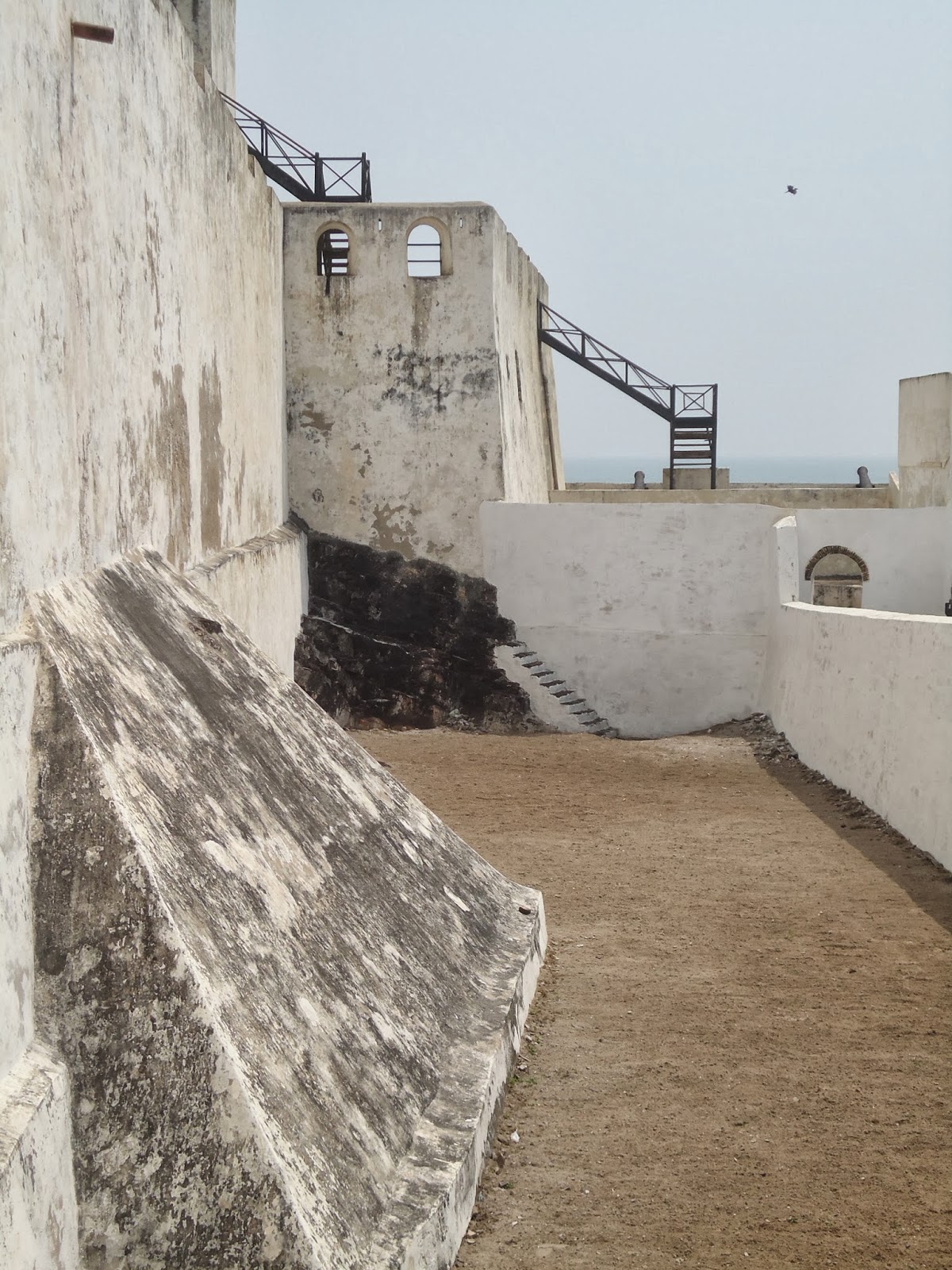Base Camp - Big Milly's Backyard
Welcome to Big Milly's Backyard! This was our home away from home while in Ghana. I spotted it my my travel book and looked it up online as well. It wasn't until one of our school parents had vacationed here over Fall Break and reported back to me that I booked our reservations. I would describe it as bohemian, laid-back, casual, friendly, worry-free. Donn and I were on the "old" end of the age range for the patrons. Most people staying here were backpackers and volunteers looking for a great place to hang out. A few families showed up as well, but the atmosphere catered to the 20-40 year-old range. Donn and I fit in just fine!
http://www.bigmilly.com/
 |
| Open-air everything! Vendor store by day, entertainment venue by night on the left. And the bar (middle right) is open 24 hours a day! |
We stayed in two different rooms during our time there. Both rooms had air conditioning and toilet/shower. But, no hot water! Actually that was just fine with us. We didn't really need it because the actual water temperature wasn't cold at all, it just took a little getting used to each time, kind of like swimming in a lake in late August. Well, you get my point, I hope.
The restaurant was open for three meals a day, which we did at the beginning. By the end of our time there, though, we switched to simple breakfasts and regular dinners, choosing to purchase for lunch what we could find and felt safe to eat from the vendors on the beach. Dinners had to be selected a couple hours ahead of time. We usually had 5-7 options to choose from and were big enough for Donn and I to share. We often went for the fresh fish dinner; we often saw the fish or seafood in the baskets on the beach earlier in the day!
 |
| Outside our room, Donn's relaxing after spending a tough afternoon relaxing on the beach. |
 |
| Donn's "view" across the way. |
One opportunity that Donn was hoping to cash in on was a drumming class. Unfortunately the drum academy advertised in the travel book closed up last year. One of the teachers lives in the area, so Thomas, one of the accommodations staff, made arrangements for Simon to come and teach Donn. Donn wasn't satisfied with just one lesson, so after two hours he came back with a huge smile, as well as a sweaty shirt and red hands. Simon eventually sought Donn out later on in the week for two more lessons (free!). He felt compelled to teach more technique. Donn went from the "kindergarten" level to about "3rd grade". Sadly for Donn, we didn't purchase a drum.
 |
| Simon and Donn at the beginning of the lessons, playing the kpanlogo. |
One such vendor, very persistent I might add, has this beautiful little girl who befriended me. Givke (sp?) is her name. She saw me often enough that she felt comfortable with plopping down next to me. "No pictures!" she exclaimed when she wanted to see my book (Game of Thrones). The only pictures were of the book covers for the rest of the books in the series. So we checked out Donn's book, Dan Brown's The Lost Symbol. Aha! At least Donn's book had symbols in it, which she then proceeded to identify. Bright girl! I think she's about 7 years old.
Givke and I had a great time going for a swim and body surfing. We eventually talked with her mother. She wanted to know if we knew anyone who might be interested in adopting Givke, to give her a better life outside of this fishing village where there's really no options for moving up unless you have money. We felt like she was asking us in a round-about way to take Givke. Well, my heart just about broke. Later, we met Givke's sister, who had just come home on holiday from a boarding school in eastern Ghana. We felt a little better about Givke, knowing that her mom (and dad?) value education enough to save and scrimp for the older daughter. Hopefully the same will happen with Givke.
.JPG) | |
| Givke's giving the book a look. |
I'm usually not one to go out dancing, but there was no way to escape the easy-going lyrics and rhythms of reggae. We danced all night it seemed!
Entertainment for Christmas Eve and Christmas night were also part of the deal. Christmas Eve performers were a local, amateur group, perhaps 25 members strong. We heard traditional drumming and songs and saw traditional dances. There was even audience participation! I couldn't hide from the group leader, even sitting behind a coconut tree.
Christmas night entertainment was a different reggae band. More dancing and fun times that night as well.
So, if you're ever on the coast of Ghana, go to Big Milly's Backyard!
Seriously, we had a fantastic time on our first Christmas holiday in Africa. This is such a huge continent to explore. How does one balance these pockets of peace and tranquility in the midst of so much "other" (war, poverty, religious intolerance, human-trafficking, disease, famine, malnutrition)?
We developed some good, simple relationships with locals, people who might find themselves in the cross-hairs of the "other". I am moved by their friendship and acceptance of who we are and truly value the time they took to make us feel welcome in a new place.
































